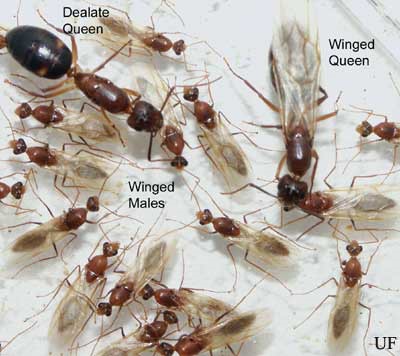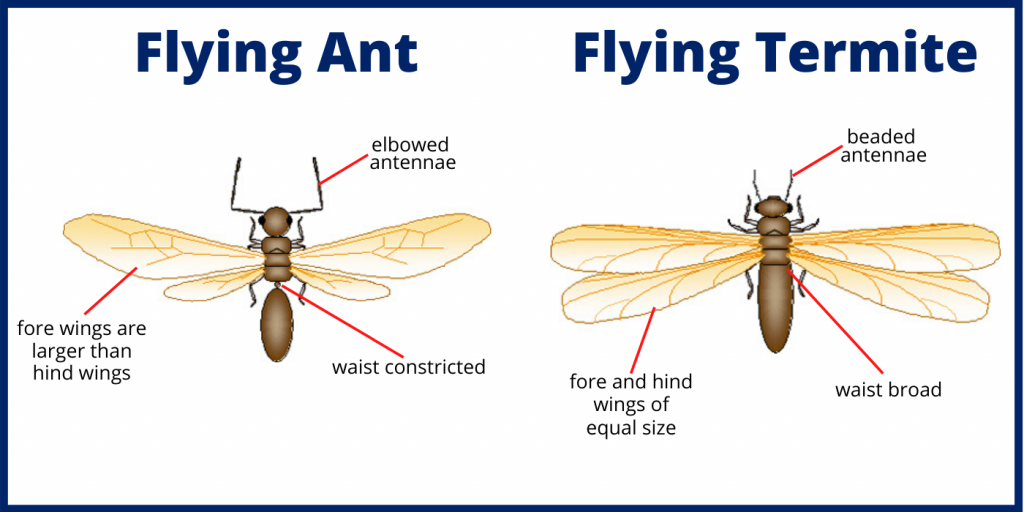How Can I Get Rid of Flying Ants?
Is it a flying ant? Or is it a winged termite? These two insects commonly get confused with one another but it’s extremely important to know the difference between the two. While they can be an issue, flying ants can be eliminated with the right pest control methods. Eliminating termites, on the other hand, uses a different method of pest control. So, before we can answer the question, “How can I get rid of flying ants?” we must know how to identify the differences between a flying ant vs. termite.
What do flying ants look like?

Facts:
- Flying carpenter ants are a prevalent indoor insect – especially in Florida.
- These pests tend to be a nuisance during the warm spring season between April and June.
- They are typically found in numerous places inside homes including window ledges and sliding glass doors.
- Carpenter ants foraging in homes can be in search of sweets or moisture, or even a new nesting site – especially in kitchens, bathrooms or other rooms that could have water leaks.
Photo courtesy of University of Florida
Is it a termite or a flying ant?
Here are the physical differences between a flying ant vs. termite:

Schedule A Free Inspection
If you are unable to get a close look at the insect, there are other ways to determine if it’s a flying ant or termite.
One way to determine if they are termites is if there are discarded wings lying around windowsills or other areas of your home. The other way of determining if it’s termites in your home is by inspecting the wood. If the wood looks like it contains dirt on the surface, it could be a sign of termites.
How can I get rid of flying ants?
Very often, the nests of these pests are difficult to find. They like areas that are easily accessible, close to moisture and food sources, safe from predators (i.e., birds and lizards), safe from flooding, heat and other environmental stresses.
One of the only ways to get rid of flying ants is to find their nest and directly apply treatment. However, finding the nest is the most difficult part. Here are some areas where they like to nest:
- underneath attic insulation
- wall voids
- under bathtubs, windows and door frames
- rotting tree stumps
- inside old wooden fences
- debris of almost any kind
- underneath mulch
The best way to get rid of a flying ant problem is to call a professional so they can determine the nesting site, apply treatment and use preventive measures around your home.
Tips to Preventing Flying Ants
Preventing flying ants is similar to preventing ants and other general pests.
- Keep your kitchen and other dining areas clean and free of crumbs and spills – including water.
- Eliminate sources of moisture or standing water. Be especially vigilant in protecting crawl spaces, basements and attics.
- Keep tree branches and shrubs cut back from the house. These can provide pests (of all kinds) a way into your home.
- Make sure that firewood and building materials are not stored next to your home.
When it comes to other preventive measures, we advise all homeowners to call a professional. Our experts at Massey Services complete thorough and detailed inspections in order to find the source of the pest issue, eliminate it and prevent pests from coming back in the future.
If you have these pests, termite or other insect problems, fill out the form below to schedule a free, no obligation inspection!
For more information on pest control, please contact Massey Services or complete the form below!